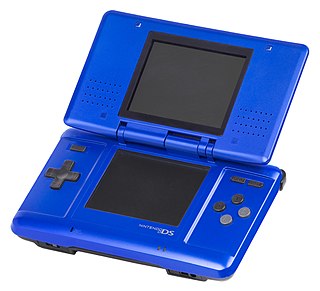
The Nintendo DS is a handheld game console produced by Nintendo, released globally across 2004 and 2005. The DS, an initialism for "Developers' System" or "Dual Screen", introduced distinctive new features to handheld games: two LCD screens working in tandem, a built-in microphone and support for wireless connectivity. Both screens are encompassed within a clamshell design similar to the Game Boy Advance SP. The Nintendo DS also features the ability for multiple DS consoles to directly interact with each other over Wi-Fi within a short range without the need to connect to an existing wireless network. Alternatively, they could interact online using the now-defunct Nintendo Wi-Fi Connection service. Its main competitor was Sony's PlayStation Portable during the seventh generation of video game consoles.
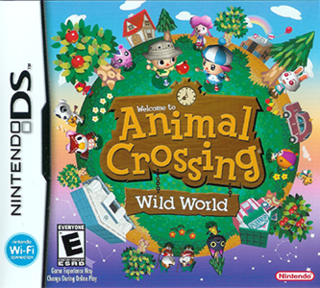
Animal Crossing: Wild World is a 2005 social simulation video game developed and published by Nintendo for the Nintendo DS handheld game console. It was released in Japan in November 2005, in North America and Australia in December 2005, and in Europe in March 2006. It is the second installment in the Animal Crossing series, and the sequel to Animal Crossing on the GameCube.
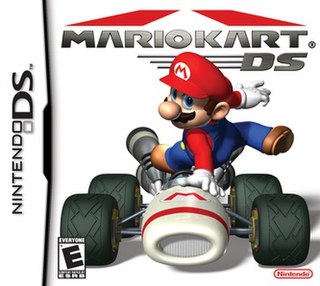
Mario Kart DS is a 2005 kart racing video game developed by Nintendo EAD Group No. 1 and published by Nintendo. It was released for the Nintendo DS handheld game console in November 2005 in North America, Europe, and Australia, and on December 8, 2005, in Japan. The game was re-released for the Wii U's Virtual Console in North America and PAL regions in April 2015 and in Japan in May 2016.

Pokémon Diamond Version and Pokémon Pearl Version are 2006 role-playing video games developed by Game Freak, published by The Pokémon Company and Nintendo for the Nintendo DS. They are the first installments in the fourth generation of the Pokémon video game series. They were first released in Japan on 28 September 2006, and released in North America, Australia, and Europe in 2007. Pokémon Platinum, a third version, was released two years later in each region. Remakes titled Pokémon Brilliant Diamond and Shining Pearl were released for the Nintendo Switch on 19 November 2021. A prequel, Pokémon Legends: Arceus, was released for the Switch on 28 January 2022.
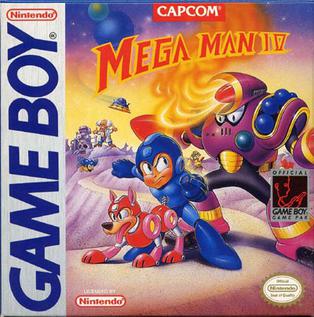
Mega Man IV is an action-platform video game by Capcom for the Nintendo Game Boy. It is the fourth installment in the handheld version of the Mega Man series. The game continues the quest of the protagonist Mega Man in the struggle with his long-time nemesis Dr. Wily, who sends out a disruptive radio signal to cause a rampage, citywide destruction from dormant robots. Mega Man IV features the traditional action platforming gameplay of the prior games while introducing one new feature, the ability to purchase items with power-ups found throughout each stage. As with previous Game Boy releases, the game incorporates gameplay elements and bosses from two sequential Nintendo Entertainment System (NES) games: Mega Man 4 and Mega Man 5. The game has received a warm critical reception. In 2013, Mega Man IV was made available on the Virtual Console of Japan's Nintendo eShop for the Nintendo 3DS. It was later released in the North American and PAL region eShops the following year.

Mega Man III is an action-platform video game by Capcom for the Nintendo Game Boy. It is the third game in the handheld version of the Mega Man series. The game follows the title character Mega Man as he fights the evil Dr. Wily, whose latest attempt to conquer the world involves sucking energy from the Earth's core to power a new machine. Along with foes from his past, Mega Man must contend with the next robot in Wily's line of "Mega Man Killers", Punk. Like its two consecutive predecessors on the Game Boy, the game combines elements from two previously released Nintendo Entertainment System (NES) titles: Mega Man 3 and Mega Man 4. In 2013, Mega Man III was made available on the Virtual Console of Japan's Nintendo eShop for the Nintendo 3DS. It was later released in the North American and PAL region eShops the following year.
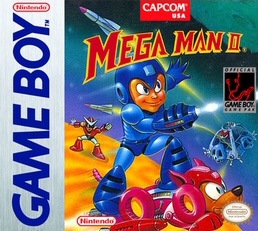
Mega Man II is an action-platform video game by Capcom for the Game Boy. It is the second game in the handheld version of the Mega Man series after Mega Man: Dr. Wily's Revenge. It is noteworthy for having been developed by a different company than the rest of the Mega Man titles on the Game Boy.
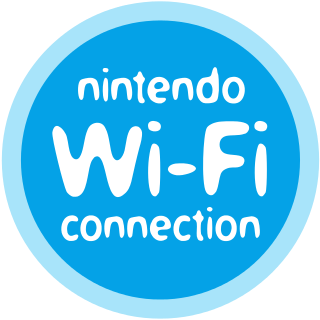
Nintendo Wi-Fi Connection (WFC) was an online multiplayer gaming service run by Nintendo to provide free online play in compatible Nintendo DS and Wii games. The service included the company's Wii Shop Channel and DSi Shop game download services. It also ran features for the Wii and Nintendo DS systems.

The Legend of Zelda: Phantom Hourglass is a 2007 action-adventure game developed and published by Nintendo for the Nintendo DS handheld game console. It is the fourteenth installment in The Legend of Zelda series and the direct sequel to the 2002 GameCube title The Wind Waker. Phantom Hourglass was released worldwide in 2007, with the exception of South Korea in April 2008. The game was re-released for the Wii U via the Virtual Console service in the PAL region in November 2015, in North America in May 2016, and in Japan in August. It earned a sequel, The Legend of Zelda: Spirit Tracks in December 2009.

Star Fox Command is a shoot 'em up video game, the fifth game in the Star Fox series, published by Nintendo for the Nintendo DS in 2006 and 2007. Star Fox Command was announced at the E3 2006 conference, under the name Star Fox DS. Command is the first Star Fox game for a handheld, and supports the Nintendo Wi-Fi Connection, making it the first online Star Fox game. The game was re-released for the Wii U Virtual Console service in 2015.
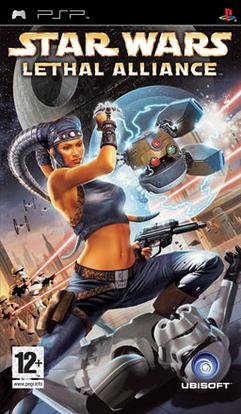
Star Wars: Lethal Alliance is a Star Wars action adventure video game for the Nintendo DS and PlayStation Portable. It takes place between Star Wars: Episode III – Revenge of the Sith and Star Wars Episode IV: A New Hope. It was developed by Ubisoft instead of LucasArts, and was released in December 2006. Lethal Alliance was met with average to very mixed reception. GameRankings and Metacritic gave it a score of 64.18% and 61 out of 100 for the PSP version, and 64.93% and 57 out of 100 for the DS version.
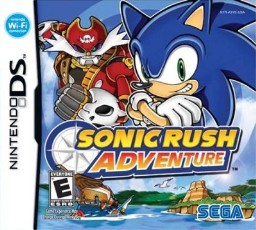
Sonic Rush Adventure is a 2007 adventure platform game for the Nintendo DS and the sequel to 2005's Sonic Rush. It follows Sonic the Hedgehog and Tails, who are teleported to an alternate dimension and seek the help of Blaze the Cat, while battling a band of robot pirates. Gameplay is similar to prior installments in the Sonic the Hedgehog franchise, with players controlling Sonic or Blaze through a series of side-scrolling levels while collecting rings and defeating enemies. Sonic Rush Adventure deviates from prior games with its elements of sea travel, featuring boating minigames that take advantage of the DS's touchscreen.
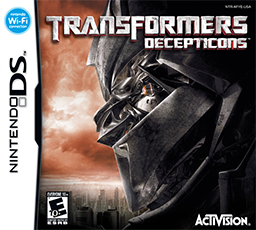
Transformers Decepticons is an action-adventure video game based on the 2007 live action film Transformers. It is the Nintendo DS port of Transformers: The Game, but follows a different storyline and focuses exclusively on the Decepticons. It was developed by Vicarious Visions alongside Transformers Autobots, which follows the Autobots; the two games share some basic similarities, but overall feature different characters, missions and locations. Both games were published by Activision in June 2007, and received mixed reviews.

Soul Bubbles is a puzzle video game for the Nintendo DS handheld console. It was developed by the French studio Mekensleep, and was published by Eidos Interactive in the PAL regions and North America in 2008. It was released in Japan in 2009 by Interchannel under the title Awatama.

Mega Man Star Force 3, known in Japan as Ryūsei no Rockman 3, is a video game developed by Capcom for the Nintendo DS handheld game console. It is the third and final game in the Mega Man Star Force series. It was released in Japan on November 13, 2008 and in United States on June 30, 2009. The game was released with two versions: Black Ace (ブラックエース) and Red Joker (レッドジョーカー). Each features a unique cover and unique character transformations, among other features. A sequel, Mega Man Star Force 4, was in development from between 2009 and 2010 when it was cancelled due to low sales of this game and Rockman EXE Operate Shooting Star.

WALL-E is a platform video game developed by Heavy Iron Studios and published by THQ, based on the 2008 film of the same name.

Sin & Punishment: Star Successor, released in Europe as Sin and Punishment: Successor of the Skies, and in Japan as Sin and Punishment: Sora no Kōkeisha is a 2009 rail shooter video game for Wii developed by Treasure and published by Nintendo. It is the sequel to the Nintendo 64 video game Sin and Punishment.

Robocalypse is a 2008 real-time strategy video game developed by Russian studio Vogster Entertainment and published by Tecmo for the Nintendo DS handheld video game console. It is the first of the Robocalypse duology and has only been released in North America. The project was led by Anton Kruglyakov and the story was written by Jay Lender and Micah Wright, former writers for animated TV series The Angry Beavers, SpongeBob SquarePants, and Phineas and Ferb. Players utilize the Nintendo DS' unique controls to build and command an army of robots to defeat an army of rogue robots determined to destroy humanity.

Guitar Hero: On Tour is a series of music video games based on the Guitar Hero series for the Nintendo DS handheld game system. The series is developed by Vicarious Visions and published by Activision. Three games in the series have been released since June 2008: Guitar Hero: On Tour, Guitar Hero On Tour: Decades, and Guitar Hero On Tour: Modern Hits.
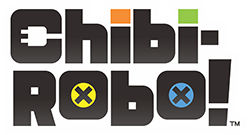
Chibi-Robo! is a series of adventure video games developed by Skip Ltd. and published by Nintendo. The franchise follows a series of tiny Robotic units known as Chibi-Robo, whose purpose is to spread Happiness. Recurring game elements of the franchise include monitoring Chibi-Robo's battery usage at all times, and cleaning Chibi-Robo's nearby environment through a variety of methods in order to collect "Happy Points" While the primary purpose of a Chibi-Robo is to assist Humans, they have also been shown to assist animals, sentient alien life, and even living toys.



















